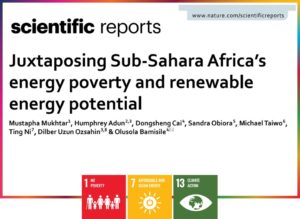
A collaborative effort involving researchers from Near East University conducted a study aimed at combating energy poverty in Sub-Saharan Africa (SSA) by harnessing the region’s rich renewable energy (RE) potential. The research proposes and evaluates the feasibility of a central RE grid, utilizing multiple RE technologies to meet the escalating electricity demands of 12 selected countries in the region by 2030 and 2040.
The study underscores the dire energy poverty situation prevalent in SSA, where all countries, except Seychelles, exhibit electricity access below 100%. Recognizing the monumental RE potential juxtaposed against this challenge, the proposed central RE grid emerges as a viable and sustainable solution. However, it demands strategic financial planning, with the most cost-effective investment option estimated at $298 billion. Importantly, this scenario integrates existing green power plants across Africa, significantly reducing the overall investment cost.
The analysis reveals wind power systems as the most feasible RE technology for resolving electricity inadequacy, especially by 2030 and 2040 due to their cost-effectiveness. The “Hybrid with High Storage” approach emerges as a promising pathway for achieving energy security and decarbonization by the stipulated timelines.
Crucially, the integration of existing power systems with new RE technologies in the proposed central grid (“Hybrid with Import Power” scenario) emerges as the most economical and straightforward pathway, reducing the carbon emissions from the electricity sector by 56.6% and 61.8% by 2030 and 2040, respectively.
The implementation of these solutions may require collaboration with global energy organizations or financial institutions like the World Bank. Strategic policies to incentivize citizen participation in installing RE systems can alleviate the investment burden on governments. Additionally, the versatile model presented in this study holds potential for application in other regions grappling with similar energy poverty challenges.
For further details, access the original paper from the publisher’s link:
https://www.nature.com/articles/s41598-023-38642-4